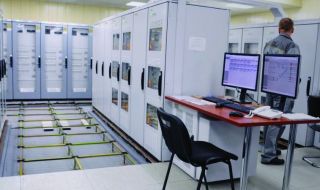Thailand inks agreement with nuclear security organization
The World Institute for Nuclear Security (WINS) and Thailand’s Office of Atoms for Peace (OAP) have signed a memorandum of understanding, WINS announced last week. WINS is a nongovernmental organization based in Vienna that works with the International Atomic Energy Agency on nuclear security–related issues. OAP is Thailand's nuclear regulatory body.
Centered on security: Under the MOU, WINS is supporting the establishment and operation of an IAEA nuclear security support center at OAP. The main functions of the center will include human resource development, technical support services for nuclear security equipment lifecycle management, and scientific support services for the provision of nuclear security expertise, analysis, and research and development, according to the IAEA.
A key aspect of the OAP project will be to support the development of Thailand’s national nuclear security training strategy, as well as to provide professional development activities to Thai nuclear stakeholders, WINS said. The project is funded by Global Affairs Canada’s Weapons Threat Reduction Program.



 A new report out of Columbia University’s Center on Global Energy Policy (CGEP) offers a number of recommendations for improving the management of spent nuclear fuel and high-level radioactive waste in the United States.
A new report out of Columbia University’s Center on Global Energy Policy (CGEP) offers a number of recommendations for improving the management of spent nuclear fuel and high-level radioactive waste in the United States.








 The U.S. House of Representatives Committee on Science, Space, and Technology is leading a one-day social media campaign today to highlight the importance of leading with science and scientific solutions as the committee works to provide support for science and the scientific community. The “tweetstorm” will run from noon to 5 p.m. (EST) and will involve a variety of science-related organizations, including the American Nuclear Society.
The U.S. House of Representatives Committee on Science, Space, and Technology is leading a one-day social media campaign today to highlight the importance of leading with science and scientific solutions as the committee works to provide support for science and the scientific community. The “tweetstorm” will run from noon to 5 p.m. (EST) and will involve a variety of science-related organizations, including the American Nuclear Society.